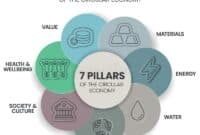Conquer the 7% Hurdle: Mastering Interest Rates for Financial Freedom
Introduction
In this auspicious occasion, we are delighted to delve into the intriguing topic related to Conquer the 7% Hurdle: Mastering Interest Rates for Financial Freedom. Let’s weave interesting information and offer fresh perspectives to the readers.
Conquer the 7% Hurdle: Mastering Interest Rates for Financial Freedom

Interest rates. The very words can evoke feelings ranging from confusion to anxiety, especially in today’s volatile economic climate. Understanding how interest rates work, however, is not just beneficial—it’s crucial for achieving financial security and making informed decisions about your money. This comprehensive guide will demystify interest rates, empowering you to confidently navigate the financial landscape and make your money work harder for you.
What are Interest Rates?
At its core, an interest rate is the cost of borrowing money or the return on lending money. Think of it as a percentage charged by a lender (like a bank) to a borrower for the privilege of using their funds. Conversely, it’s the percentage earned by a lender for allowing someone else to use their money. This percentage is typically expressed annually (APR – Annual Percentage Rate) but can be calculated differently depending on the loan or investment.
Types of Interest Rates:
Interest rates aren’t a monolithic entity. They vary significantly based on several factors, leading to different types:
-
Nominal Interest Rate: This is the stated interest rate, the raw percentage you see advertised. It doesn’t account for inflation.

Real Interest Rate: This is the nominal interest rate adjusted for inflation. It reflects the true purchasing power of your returns or the actual cost of borrowing. The formula is: Real Interest Rate = Nominal Interest Rate – Inflation Rate.
-
Fixed Interest Rate: This remains constant throughout the loan or investment term. This provides predictability, allowing you to budget accurately.
-
Variable Interest Rate: This fluctuates based on market conditions. While potentially offering higher returns initially, it also carries greater risk due to its unpredictability.
-
Prime Rate: This is a benchmark interest rate set by commercial banks, often used as a base for other interest rates, like those on credit cards or loans.

-
Federal Funds Rate: This is the target rate set by the Federal Reserve (in the US) for overnight lending between banks. It influences other interest rates throughout the economy.

How Interest Rates Impact You:
Interest rates affect various aspects of your financial life:
-
Borrowing Money: A higher interest rate means higher monthly payments on loans like mortgages, auto loans, and personal loans. Conversely, lower interest rates make borrowing more affordable.
-
Saving Money: Higher interest rates mean you earn more on your savings accounts, certificates of deposit (CDs), and other interest-bearing accounts. Lower rates mean lower returns.
-
Investing: Interest rates impact investment returns in several ways. Higher rates can make bonds more attractive, while lower rates may encourage investment in riskier assets like stocks. Interest rate changes also influence the overall market performance.
-
Inflation: Interest rates are a tool used by central banks to control inflation. Raising interest rates can curb inflation by making borrowing more expensive and slowing down economic activity. Lowering rates can stimulate economic growth but may lead to higher inflation.
Factors Influencing Interest Rates:
Several factors play a significant role in determining interest rates:
-
Inflation: High inflation typically leads to higher interest rates as lenders demand compensation for the decreased purchasing power of their money.
-
Economic Growth: Strong economic growth can lead to higher interest rates as demand for borrowing increases.
-
Government Policies: Central bank actions, like adjusting the federal funds rate, directly impact interest rates. Government spending and fiscal policies also play a role.
-
Supply and Demand: The interplay of supply (available funds) and demand (borrowing needs) influences interest rates. High demand and low supply typically lead to higher rates.
-
Risk: Lenders charge higher interest rates for loans perceived as riskier, such as those with lower credit scores or longer repayment terms.
Understanding Compound Interest:
Compound interest is the interest earned on both the principal amount and accumulated interest. It’s a powerful tool for wealth building but can also significantly increase the cost of borrowing. The longer the time horizon, the more significant the impact of compounding. The "Rule of 72" provides a quick estimate of how long it takes for an investment to double: divide 72 by the annual interest rate.
Strategies for Navigating Interest Rates:
-
Shop Around: Compare interest rates from different lenders before taking out a loan or opening a savings account.
-
Improve Your Credit Score: A higher credit score qualifies you for lower interest rates.
-
Negotiate: Don’t be afraid to negotiate interest rates with lenders.
-
Understand Your Loan Terms: Carefully review the terms and conditions of any loan before signing.
-
Diversify Your Investments: Don’t put all your eggs in one basket. Diversification can help mitigate risk.
-
Monitor Interest Rate Changes: Stay informed about changes in interest rates to make timely adjustments to your financial strategies.
Conclusion:
Understanding interest rates is a fundamental aspect of financial literacy. By grasping the different types of interest rates, the factors that influence them, and their impact on your financial life, you can make informed decisions that contribute to your long-term financial well-being. Don’t let the complexity intimidate you; embrace the knowledge, and you’ll be well on your way to conquering the challenges and reaping the rewards of smart financial management. The 7% hurdle, whether it represents a high interest rate on a loan or a desirable return on an investment, becomes manageable with a clear understanding of the forces at play. Financial freedom awaits those who master the intricacies of interest rates.

Closure
Thus, we hope this article has provided valuable insights into Conquer the 7% Hurdle: Mastering Interest Rates for Financial Freedom. We appreciate your attention to our article. See you in our next article!
google.com





